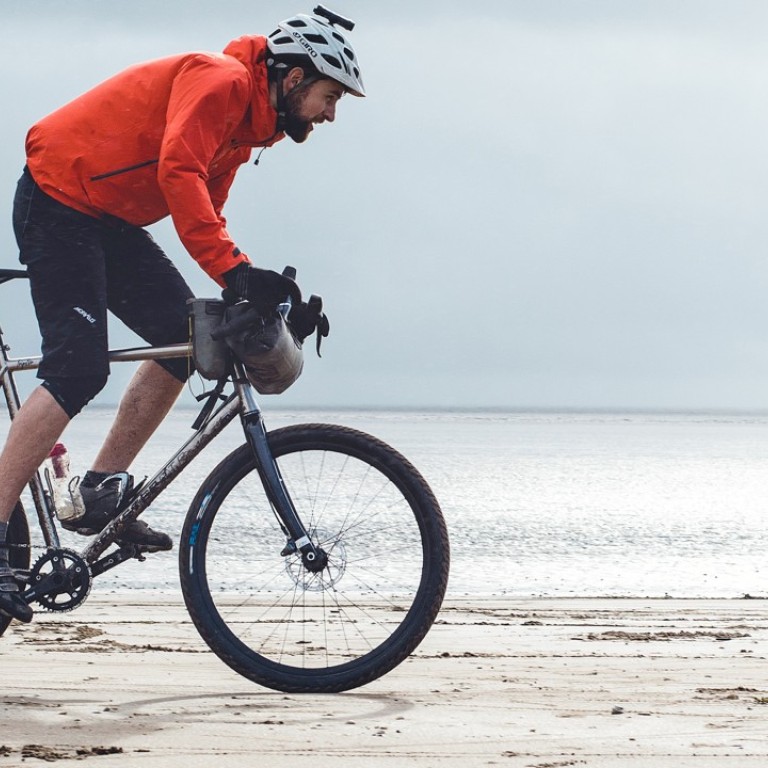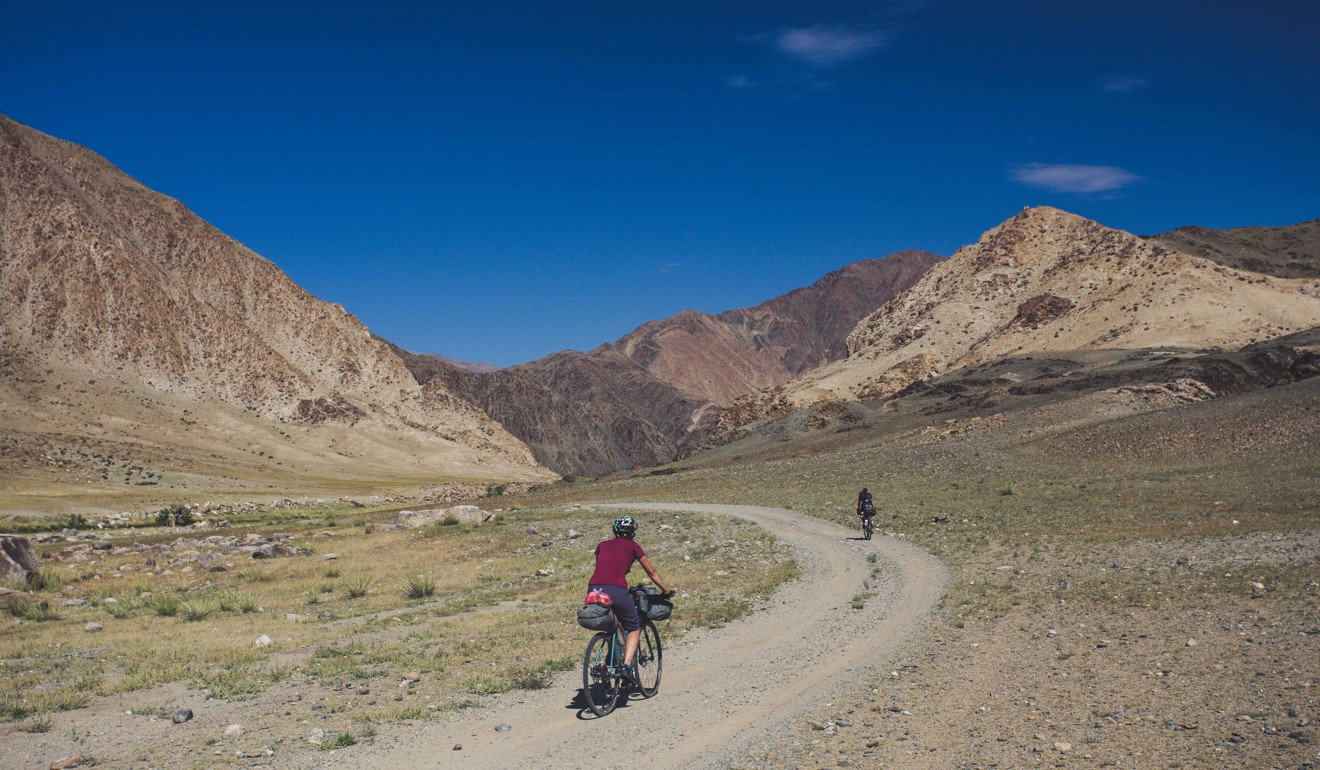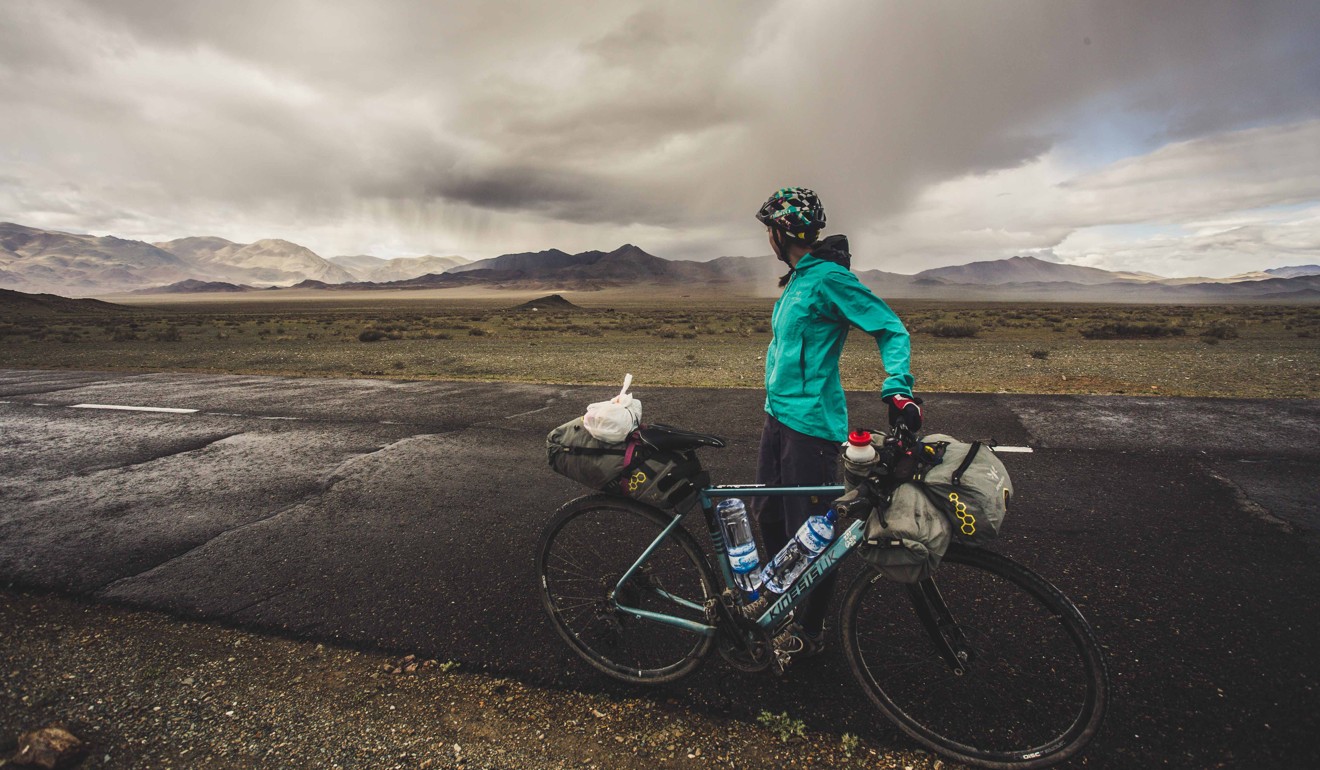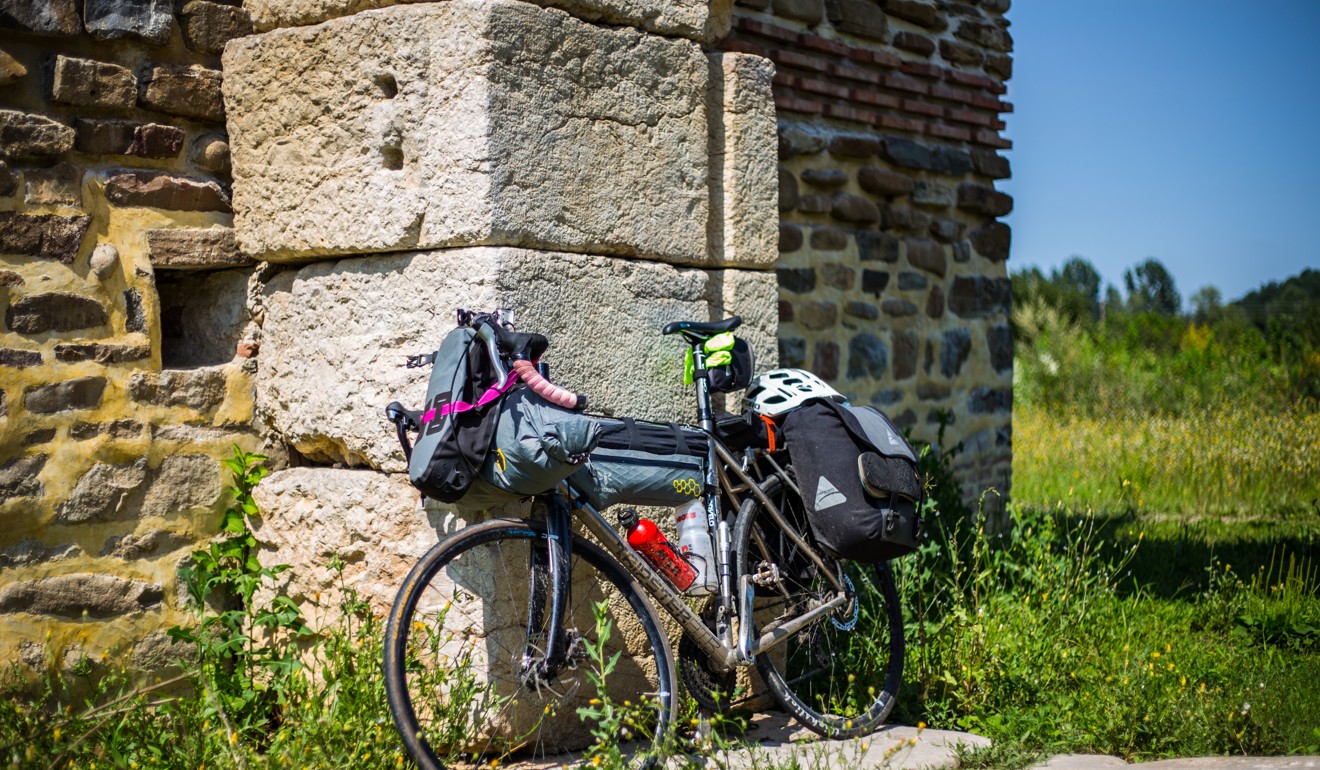
New cycling trend: how gravel bikes are opening up remote terrain as never before – and the best places to go ‘bikepacking’
Better suited to unpaved tracks than a road bike and lighter than a mountain bike, gravel bikes let you ‘bikepack’ long – or short – distances in remote areas such as the Caucasus, Central Asia, the French Alps and the US Midwest
“Gravel bikes? It’s just another fad designed to sell more bikes to the uninitiated.” That was a friend’s assessment of the “big new thing in cycling” when I bought a gravel bike last year.
And he should know what he is talking about – he’s cycled most of the major passes of the French Alps and has ridden up the 1,912-metre Mont Ventoux three times in one day.
But 12 months down the line, he is in the market for a gravel bike of his own.
Explore China’s Yangshuo by bike on a cycling tour set to a silent disco soundtrack
Gravel bikes and the associated activity of “bikepacking” have become the new buzzwords in cycling. Sales of gravel bikes reached US$28.9 million in the first quarter of 2018, up from US$10.1 million in the same period last year, according to Bicycle Retailer magazine. On the other hand, road bike sales in the US were down by 25 per cent in the first quarter of this year, compared to 2017.

“Gravel is the fastest growing sector of the bike market,” says Stu Bowers, deputy editor of Cyclist magazine in the UK. And since the US – and to a lesser extent the UK – often lead bike trends, the international market is likely to follow suit.
The exhilaration of … belting down a gravel trail in the Caucasus Mountains with a few mates, carrying all your own gear, it certainly makes you feel young again.
But what is a gravel bike? And what is bikepacking?
The concept originated in the United States, in areas such as Colorado, Utah and Idaho that have thousands of kilometres of unpaved gravel roads snaking through forests and across mountains. These roads provide fantastic, traffic-free riding, but are too rough to be ridden comfortably (or without constant punctures) on a road bike, yet not rugged enough to justify pedalling the weight of a mountain bike.
In this case, a gravel bike is perfect: it’s a beefed-up, dropped handlebar bike that from a distance could be mistaken for a regular road bike. It has a relaxed frame geometry with a somewhat upright riding position, which is more comfortable, especially over long distances on rough terrain. Disc brakes allow for better braking in the dirt, and wider tyres provide a more aggressive tread than road tyres for improved grip and puncture resistance.
“Riding a gravel bike feels like going back to my cycling roots,” says Rob Penn, author of 2010 book It’s All About the Bike. After years of riding expensive road bikes, Penn recently bought a gravel bike – a Genesis Croix de Fer – which he rides on forest trails and single-track paths in the hills behind his house in Wales, a western part of Great Britain.

Like many gravel-bike riders, the “go anywhere” nature of the machine has inspired Penn to go further afield. A gravel bike will usually have mounts for mudguards, extra water bottles and luggage racks, which is where the “bikepacking” bit comes in.
Bikepacking is essentially old-fashioned cycle touring, but in wilder terrain. True aficionados will carry tents and sleeping bags, for example, in seat packs and frame packs (panniers are shunned, as they tend to affect the bike’s handling) and head off for multi-day, or even multi-week rides across wild terrain.
Seven of the best cycling gadgets to keep you safe, streamlined and switched on
“The exhilaration of riding gravel trails in Georgia, Montenegro, Bosnia and Serbia – belting down a gravel trail in the Caucasus Mountains with a few mates, carrying all your own gear,” Penn says, “it certainly makes you feel young again.”
Riders such as Scotsman Ed Shoote venture to some of the most remote roads on the planet with their gravel bikes. “I particularly enjoy riding in Central Asia,” says Shoote, who has bikepacked across more than 50 countries. “I’ve ridden in almost every ’Stan, including a crossing of Kyrgyzstan in the middle of winter.”

He recalls riding through a remote village in Tibet where few foreigners, if any, had ventured. “The locals all came to investigate our bikes, stove and tiny tent,” he says. “Some young monks then came running over with packs of noodles – happily feeding the poor foreign travellers.”
Of course, there are downsides to the more extreme forms of bikepacking: carrying heavy loads, wearing the same clothes for weeks on end and the problems and dangers of “mechanicals” (when your bike malfunctions) and injury.
Less adventurous bikepackers – myself included – will go for the easier option, and enjoy multi-day trips during which they stay in bed and breakfast accommodation. This way, there’s less to carry so the cycling is more fun, and you can enjoy the luxuries of a hot shower, warm meal and comfortable bed at the end of each day.

This was a the case for a recent three-day trip I did through the wilds of Mid Wales, known by 18th century travellers as The Desert of Wales. The name has nothing to do with the climate – Wales is a rain-drenched country – but a reference to the seemingly endless kilometres of exposed, wind-blasted moorland where neither settlements nor humans are to be found. There’s just the occasional dirt road cutting across these forgotten hills, which is exactly what you want on a bikepacking adventure.
Our route took us along a mix of forest trails, moorland dirt tracks along the sides of some of the biggest reservoirs in Britain, and narrow tarmac roads linking the settlements of Llanwrtyd Wells (officially Britain’s smallest town), the old drover’s town of Tregaron and the busy market town of Rhayader.
On your bike: the push to make Hong Kong more cycle-friendly
The roughest tracks would have been impossible on road bikes, which would have suffered endless punctures and, with their stiff frames, been impossibly uncomfortable – but we were able to ride unhindered across dirt, gravel and rocks. The only time we had to dismount and push was for a couple of shallow stream crossings, and with just a seat pack and small backpack for my kit, the rougher sections and downhills were as much fun as they would have been on a mountain bike, albeit rather more bumpy.
So is this really the next big thing in cycling, or just another marketing fad? The sales figures and the enthusiasm of its exponents would suggest that gravel biking and bikepacking are here to stay.

What you need
A bike: the Kinesis Tripster (£700 – approximately US$917 – from kinesisbikes.co.uk) is a good starter gravel bike, described by the manufacturers as “a two-wheeled Swiss Army knife”, while the upmarket Kinesis Tripster ATR for £1,850 (approximately US$2,425) can take on more challenging, longer distance adventures with ease. This was the bike used by Ed Shoote on his Central Asian adventures.
A pack: a seat pack such as Topeak’s Backloader (US$69, topeak.com) along with a bar bag like the Topeak Frontloader (US$80) will carry all you need for less demanding tours.
Clothing: rather than the tight Lycra of traditional road cycling, gravel bikers tend to favour loose and more comfortable clothing similar to that worn by mountain bikers. Even so, padded undershorts are essential for saddle comfort, and a helmet should also be worn.

Where to go
Cambrian Mountains, Wales
My three-day tour, described above, covered 80 miles (130 kilometres) and saw us climb 5,900 feet (1,800 metres) on a mix of dirt roads and minor country lanes.
Ladakh Lakes Trail, India
Linking the lakes of Tso Kar and Tso Moriri, this 46-mile (74-kilometre) route takes you up to a breathtaking 18,000 feet (5,500 metres) in the wild Rupshu area of southeastern Ladakh in the Indian Himalayas.
Tian Shan Traverse, Kyrgyzstan
This epic 613-mile (990-kilometre) adventure is 95 per cent on gravel roads and takes in 49,000 feet (14,935 metres) of climbing.
Pashmina Le Refuge: the newest hot spot in snowy Val Thorens
Khangai Mountains Traverse, Mongolia
A six-day, 300-mile (480-kilometre) traverse across remote Mongolian mountains that top out at 9,200 feet (2,800 metres).
Beaver, Utah, US
This is a strenuous one-day ride with a massive 10,000 feet (3,000 metres) of climbing in the Fishlake National Forest. It’s home to the world’s oldest aspen grove – which makes autumn a perfect time to visit for the colours.
Haute Tarentaise, France
The forest roads and old shepherd’s trails between the ski resorts of Tignes, St. Foy and Les Arcs offer days of exploring for anyone who can read a map.
For more routes: bikepacking.com

